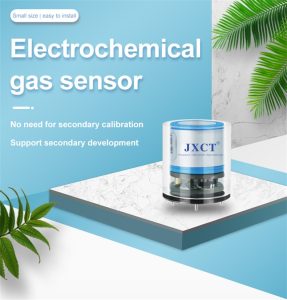-
What are the types of industrial gas sensors?
- Industrial gas sensors play a crucial role in the monitoring and control of various industrial processes. They detect and measure the concentration of gases in the environment and provide real-time data to ensure safe and efficient operat……
- Chat Online
-
Description
Industrial gas sensors play a crucial role in the monitoring and control of various industrial processes. They detect and measure the concentration of gases in the environment and provide real-time data to ensure safe and efficient operations. There are several types of industrial gas sensors available in the market, each with unique features and applications.
Electrochemical sensors
Electrochemical sensors are the most commonly used type of industrial gas sensors. They operate by measuring the electrical current produced by a chemical reaction between the gas being measured and an electrode. Electrochemical sensors offer high accuracy, sensitivity, and selectivity. They can detect a wide range of gases, including toxic and flammable gases such as carbon monoxide, hydrogen sulfide, and oxygen. Electrochemical sensors are widely used in industries such as oil and gas, chemical processing, and food and beverage production.

Infrared sensors
Infrared sensors detect gases by measuring the absorption of infrared light by the gas molecules. They are highly selective and can detect specific gases, such as methane, carbon dioxide, and carbon monoxide. Infrared sensors are commonly used in industries such as oil and gas, petrochemical, and mining.
Catalytic bead sensors
Catalytic bead sensors are used to detect flammable gases such as methane, propane, and butane. They consist of two beads coated with a catalyst that promotes the oxidation of the gas being measured. When the gas comes into contact with the beads, it is oxidized, producing heat and increasing the temperature of the beads. The change in temperature is measured and used to determine the concentration of the gas. Catalytic bead sensors are widely used in industries such as oil and gas, chemical processing, and manufacturing.
Photoionization detectors
Photoionization detectors use ultraviolet light to ionize gas molecules and create a measurable electrical current. They are commonly used to detect volatile organic compounds (VOCs) such as benzene, toluene, and xylene. Photoionization detectors are highly sensitive and can detect gas concentrations in the parts per billion (ppb) range. They are used in industries such as semiconductor manufacturing, pharmaceuticals, and environmental monitoring.

Metal oxide sensors
Metal oxide sensors operate on the principle of the reduction of metal oxides in the presence of a gas. The reduction of the metal oxide causes a change in resistance, which is measured and used to determine the concentration of the gas. Metal oxide sensors are commonly used to detect gases such as carbon monoxide, nitrogen dioxide, and sulfur dioxide. They are widely used in industries such as automotive, aerospace, and mining.
In conclusion
industrial gas sensors are essential components in ensuring safe and efficient industrial operations. Electrochemical sensors, infrared sensors, catalytic bead sensors, photoionization detectors, and metal oxide sensors are the most commonly used types of industrial gas sensors. Each type of sensor has unique features and applications, and the choice of sensor depends on the specific requirements of the application.
-
Recommend:
-
-
How does the gas detector detect gas?
Gas detectors are essential tools in various industries and…
-
What is the difference between gas detectors?
Gas detectors are essential devices used to detect the pres…
-
Gas sensors are essential tools used in various industries …
-
Advantages and disadvantages of gas sensors
Gas sensors play a vital role in various industries and app…
-
 : +86 155 8830 2704
: +86 155 8830 2704 : jxdziot@gmail.com
: jxdziot@gmail.com
